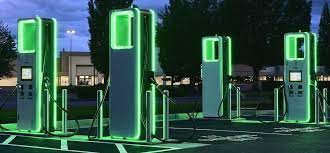Uncategorized
Electrifying America’s Roads: White House Commits $623 Million for Enhanced EV Charging Infrastructure
The rise of electric vehicles (EVs) on American highways marks a significant shift in transportation, yet it brings with it the challenge of range anxiety. Unlike traditional vehicles, which have the luxury of a well-established network of gas stations, EV drivers often grapple with limited charging options. This is particularly true in so-called “charging deserts” – often lower-income areas with few facilities. In a strategic move to counter this, the White House has announced a substantial $623 million investment through competitive grants. This funding is aimed at enriching the US charging landscape with an additional 7,500 charging ports, focusing on bridging the accessibility gap in rural and low- to moderate-income regions where charging options are notably limited.
This financial injection is part of the broader $7.5 billion set aside for charging infrastructure in the 2021 Bipartisan Infrastructure Law. It highlights the government’s dedication to pushing the envelope in the electrification of transportation. The overarching objective is to exceed 500,000 chargers nationwide, forming a robust framework to support the expanding array of electric vehicles.
Transportation accounts for approximately 30 percent of the US’s greenhouse gas emissions. Therefore, expanding EV infrastructure is a pivotal move towards meeting environmental objectives. Despite the increase in EV sales in the US, the nation still lags behind global frontrunners like Norway, Germany, and China. The Biden administration’s strategy to bolster domestic green industries is gathering momentum. This strategy includes a spectrum of initiatives, ranging from mining battery materials and manufacturing batteries to producing electric cars and chargers.
Half of the newly announced funds are earmarked for community-focused projects. These projects aim to strategically position EV chargers and hydrogen fuel facilities near public spaces like schools, parks, and office buildings. Special attention is being paid to areas lacking private parking facilities, ensuring that people without personal garages have access to these resources. For instance, Contra Costa County plans to install over 100 chargers at local libraries, and Alaska is investing in the development of Haines, highlighting a commitment to inclusivity.
The remainder of the funding will be used to establish comprehensive charging networks along major US highways. This includes supporting cities such as Idaho Falls and Kings Mountain in building new electric charging stations, thereby enhancing the feasibility of long-distance EV travel and ensuring local communities have convenient access to these facilities.
However, challenges remain. Setting up these charging stations involves navigating a maze of local permitting regulations and potential delays in acquiring necessary components. The urgency of deploying this infrastructure is underscored by studies showing that the visible presence of chargers can significantly encourage drivers to switch to electric vehicles.
The White House’s bold plan is not just about mitigating range anxiety; it’s also about propelling the adoption of EVs in the US. With the funding now secured, the critical phase of installing these chargers begins. As America embarks on this second automotive revolution, the success of this initiative will depend on its reach to all American citizens, ensuring that the future of electric transportation is truly “made in America by American workers.













